Abstract
The effects of streptolysin O (SO) (1 to 4 hemolytic units) on the mobility of neutrophilic leukocytes from humans, baboons, sheep, and rabbits were compared. After SO treatment, chemotaxis and random mobility of human neutrophils were markedly suppressed, baboon and sheep neutrophils were partially suppressed, and rabbit neutrophils were unaffected and demonstrated normal chemotaxis and mobility. The amounts of SO used in the mobility studies caused no leukocyte lysis or trypan blue uptake by human, baboon, or sheep cells, and minimal lysis or trypan blue uptake by rabbit cells. The possible involvement of immune mediators in the observed inhibition of human neutrophils was considered and excluded by the following studies. White blood cells from humans with humoral or cellular immune deficiencies responded in a manner similar to normal human cells; supernatant solutions from SO-treated human white blood cells did not contain a chemotactic suppressor; preincubation of SO with cholesterol (an inhibitor of SO hemolytic activity) caused loss of the chemotactic suppressive effect of the toxin on human leukocytes; and leukocytes from rabbits preimmunized with SO remained refractory to chemotactic suppression.
Full text
PDF
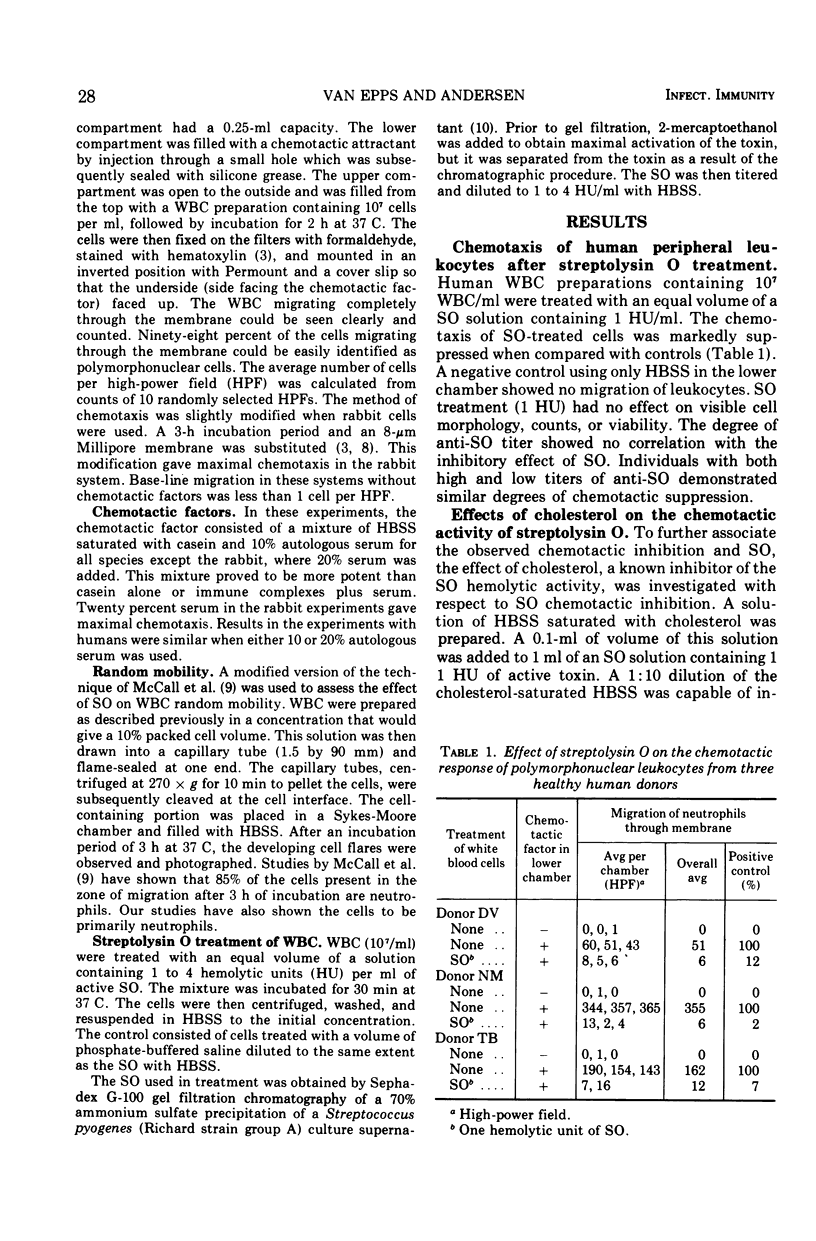
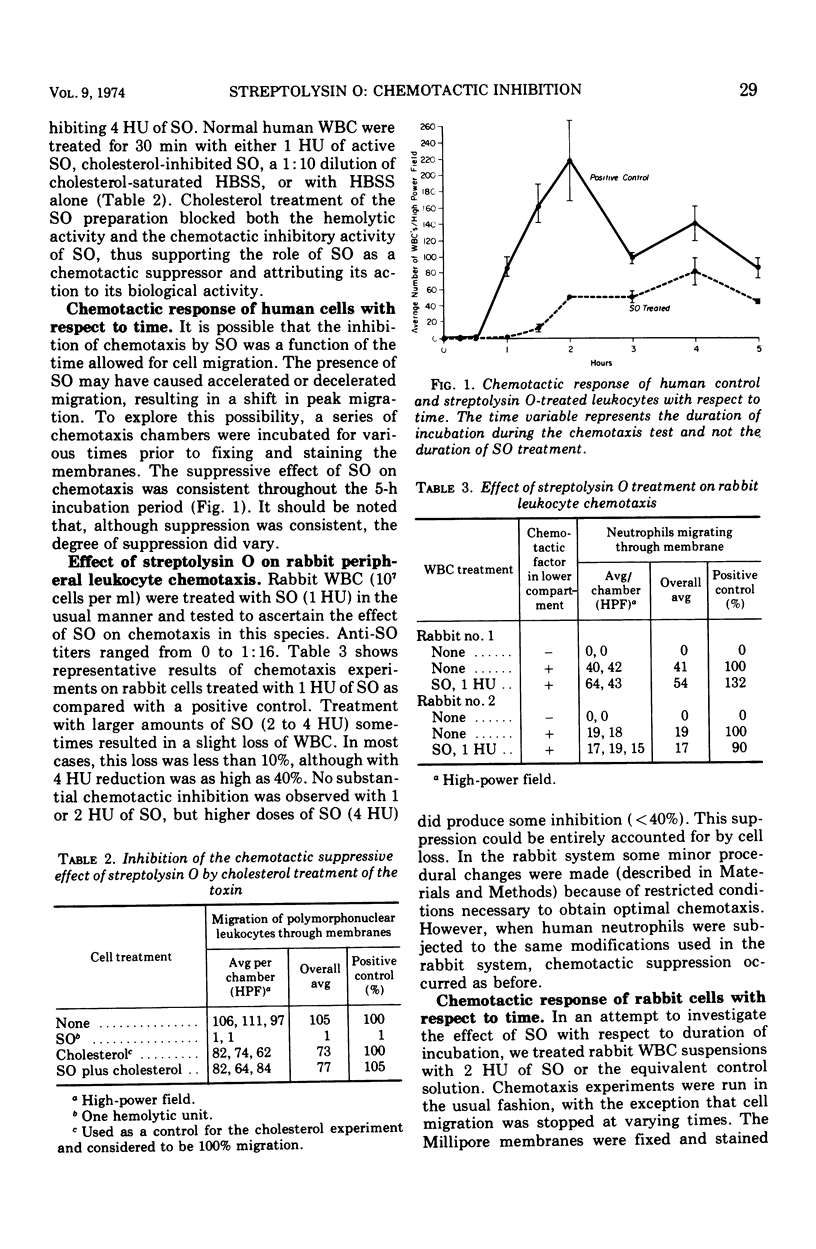
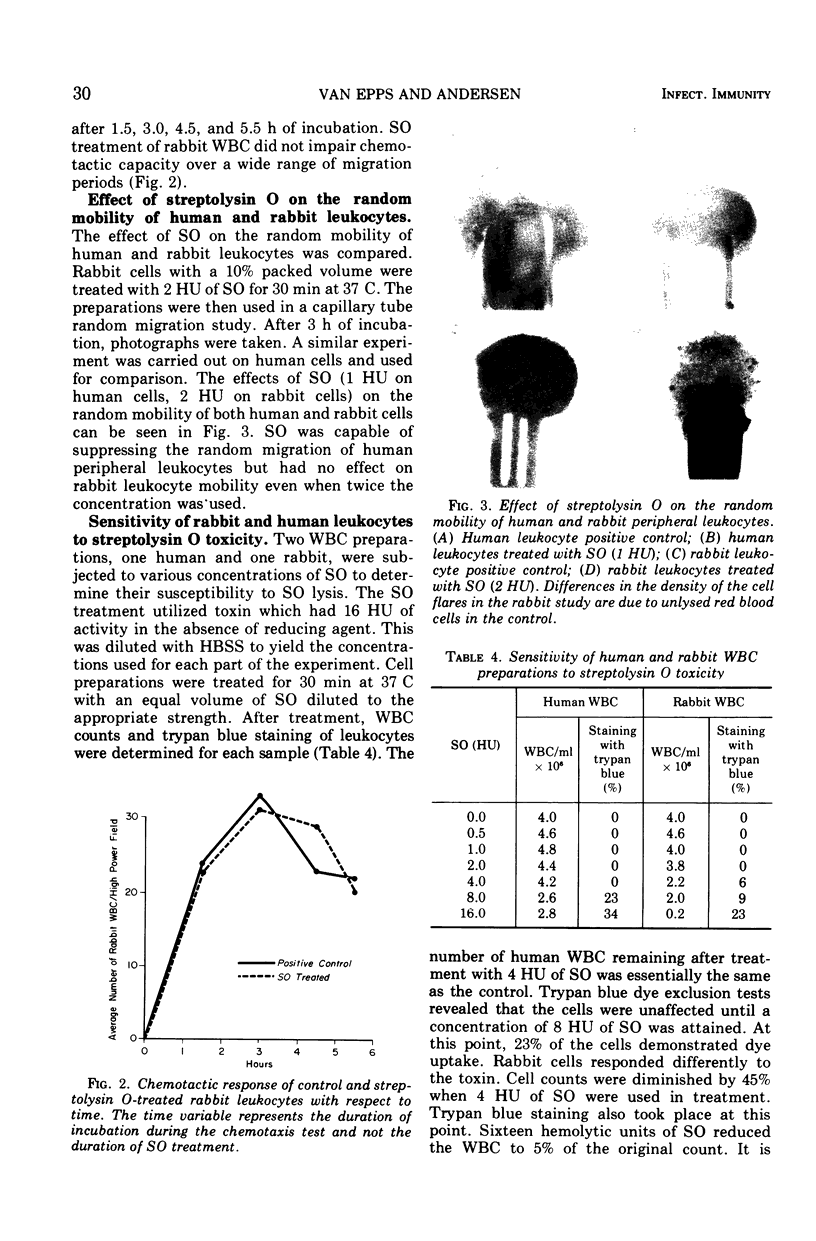
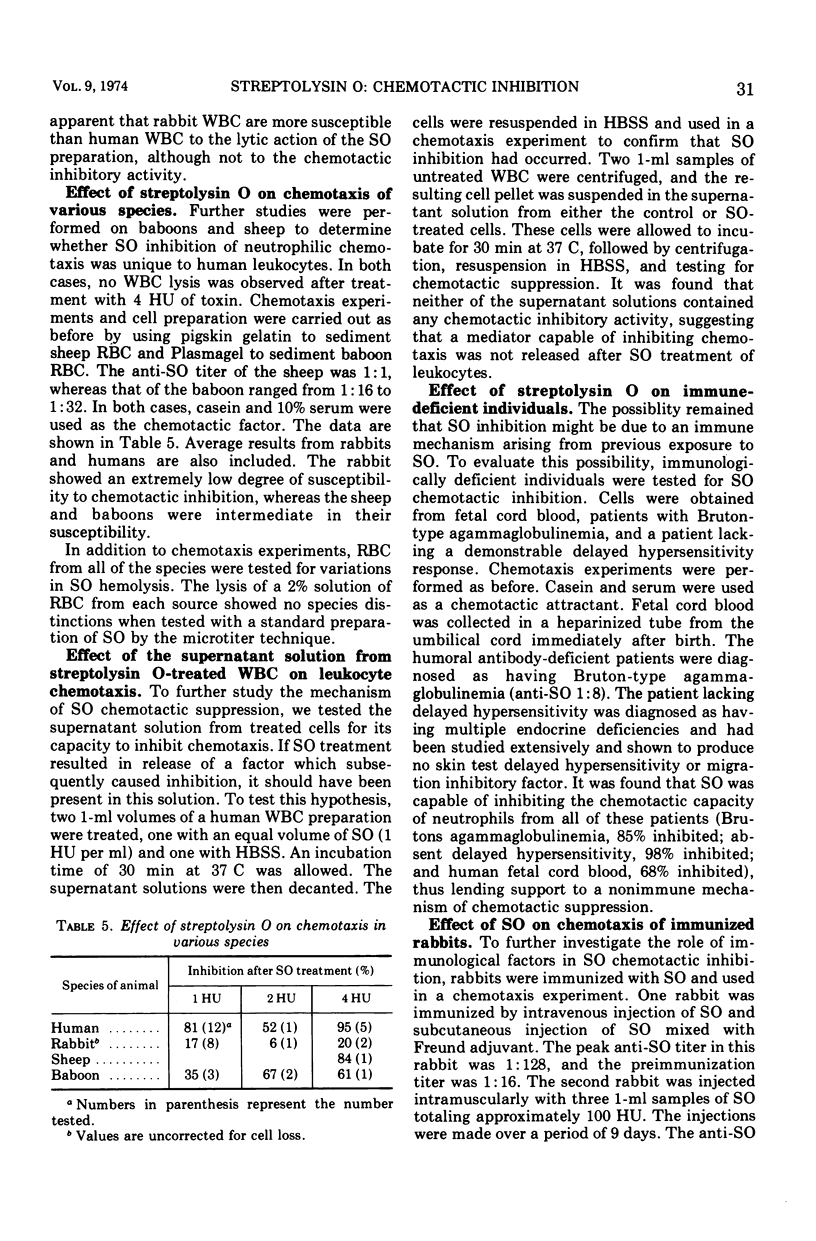
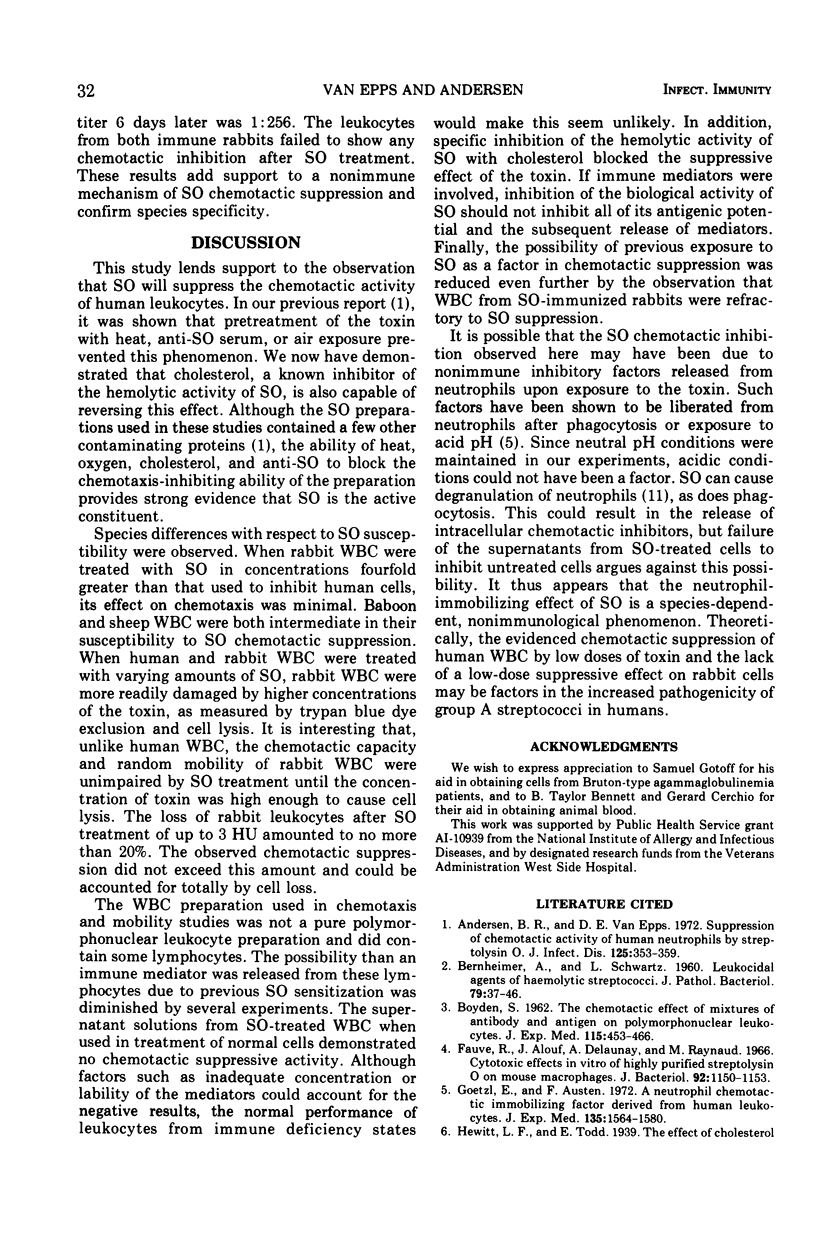

Images in this article
Selected References
These references are in PubMed. This may not be the complete list of references from this article.
- Andersen B. R., Van Epps D. E. Suppression of chemotatic activity of human neutrophils by streptolysin O. J Infect Dis. 1972 Apr;125(4):353–359. doi: 10.1093/infdis/125.4.353. [DOI] [PubMed] [Google Scholar]
- BERNHEIMER A. W., SCHWARTZ L. L. Leucocidal agents of haemolytic streptococci. J Pathol Bacteriol. 1960 Jan;79:37–46. doi: 10.1002/path.1700790105. [DOI] [PubMed] [Google Scholar]
- BOYDEN S. The chemotactic effect of mixtures of antibody and antigen on polymorphonuclear leucocytes. J Exp Med. 1962 Mar 1;115:453–466. doi: 10.1084/jem.115.3.453. [DOI] [PMC free article] [PubMed] [Google Scholar]
- Fuve R. M., Alouf J. E., Delaunay A., Raynaud M. Cytotoxic effects in vitro of highly purified streptolysin O on mouse macrophages cultured in a serum-free medium. J Bacteriol. 1966 Oct;92(4):1150–1153. doi: 10.1128/jb.92.4.1150-1153.1966. [DOI] [PMC free article] [PubMed] [Google Scholar]
- Goetzl E. J., Austen K. F. A neutrophil-immobilizing factor derived from human leukocytes. I. Generation and partial characterization. J Exp Med. 1972 Dec 1;136(6):1564–1580. doi: 10.1084/jem.136.6.1564. [DOI] [PMC free article] [PubMed] [Google Scholar]
- HIRSCH J. G., BERNHEIMER A. W., WEISSMANN G. MOTION PICTURE STUDY OF THE TOXIC ACTION OF STREPTOLYSINS ON LEUCOCYTES. J Exp Med. 1963 Aug 1;118:223–228. doi: 10.1084/jem.118.2.223. [DOI] [PMC free article] [PubMed] [Google Scholar]
- Keller H. U., Sorkin E. Studies on chemotaxis. VI. Specific chemotaxis in rabbit polymorphonuclear leucocytes and mononuclear cells. Int Arch Allergy Appl Immunol. 1967;31(6):575–586. [PubMed] [Google Scholar]
- McCall C. E., Caves J., Cooper R., DeChatlet L. Functional characteristics of human toxic neutrophils. J Infect Dis. 1971 Jul;124(1):68–75. doi: 10.1093/infdis/124.1.68. [DOI] [PubMed] [Google Scholar]
- Van Epps D. E., Andersen B. R. Isolation of streptolysin O by preparative polyacrylamide gel electrophoresis. Infect Immun. 1973 Mar;7(3):493–495. doi: 10.1128/iai.7.3.493-495.1973. [DOI] [PMC free article] [PubMed] [Google Scholar]
- ZUCKER-FRANKLIN D. ELECTRON MICROSCOPE STUDY OF THE DEGRANULATION OF POLYMORPHONUCLEAR LEUKOCYTES FOLLOWING TREATMENT WITH STREPTOLYSIN. Am J Pathol. 1965 Sep;47:419–433. [PMC free article] [PubMed] [Google Scholar]



